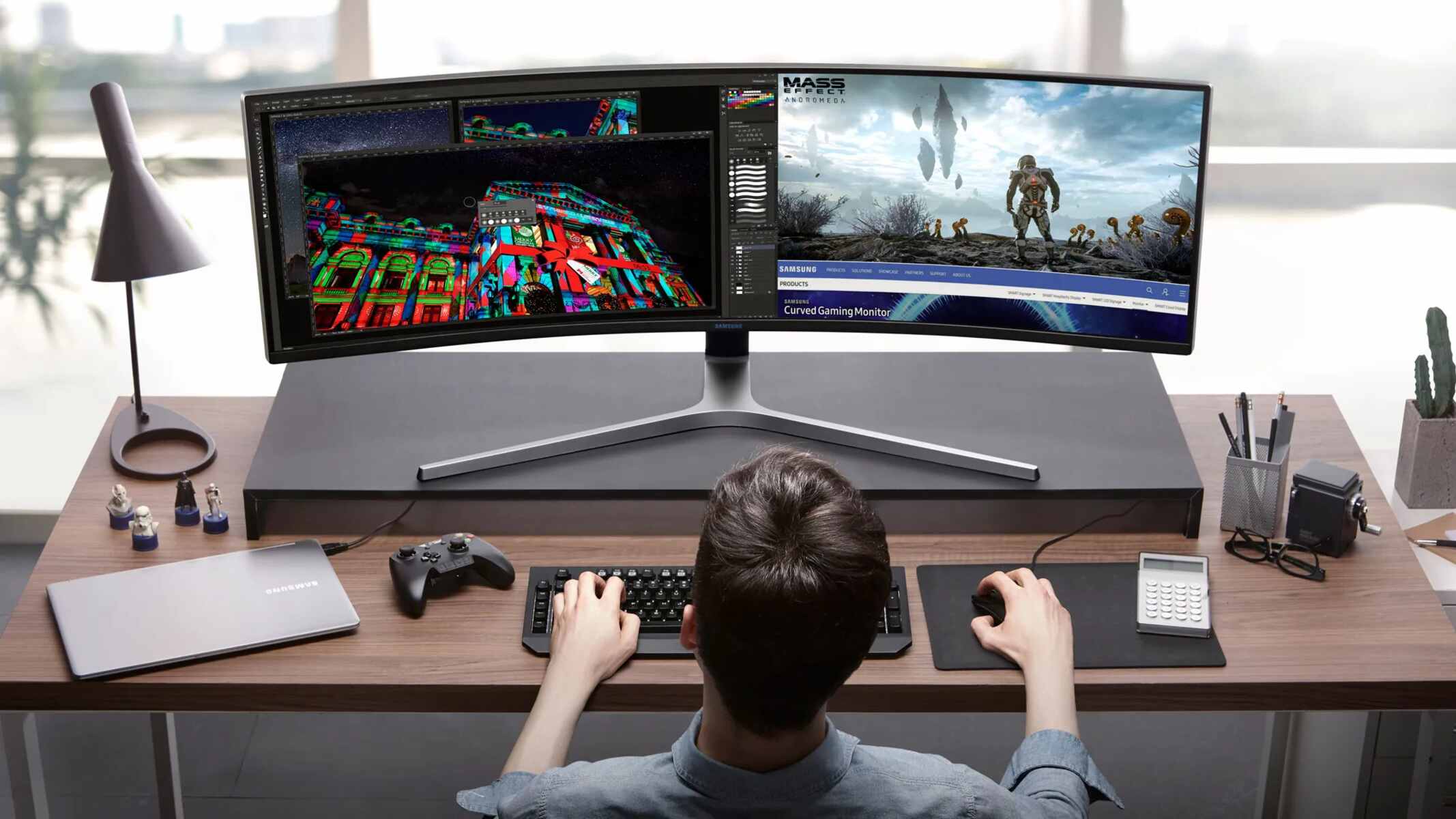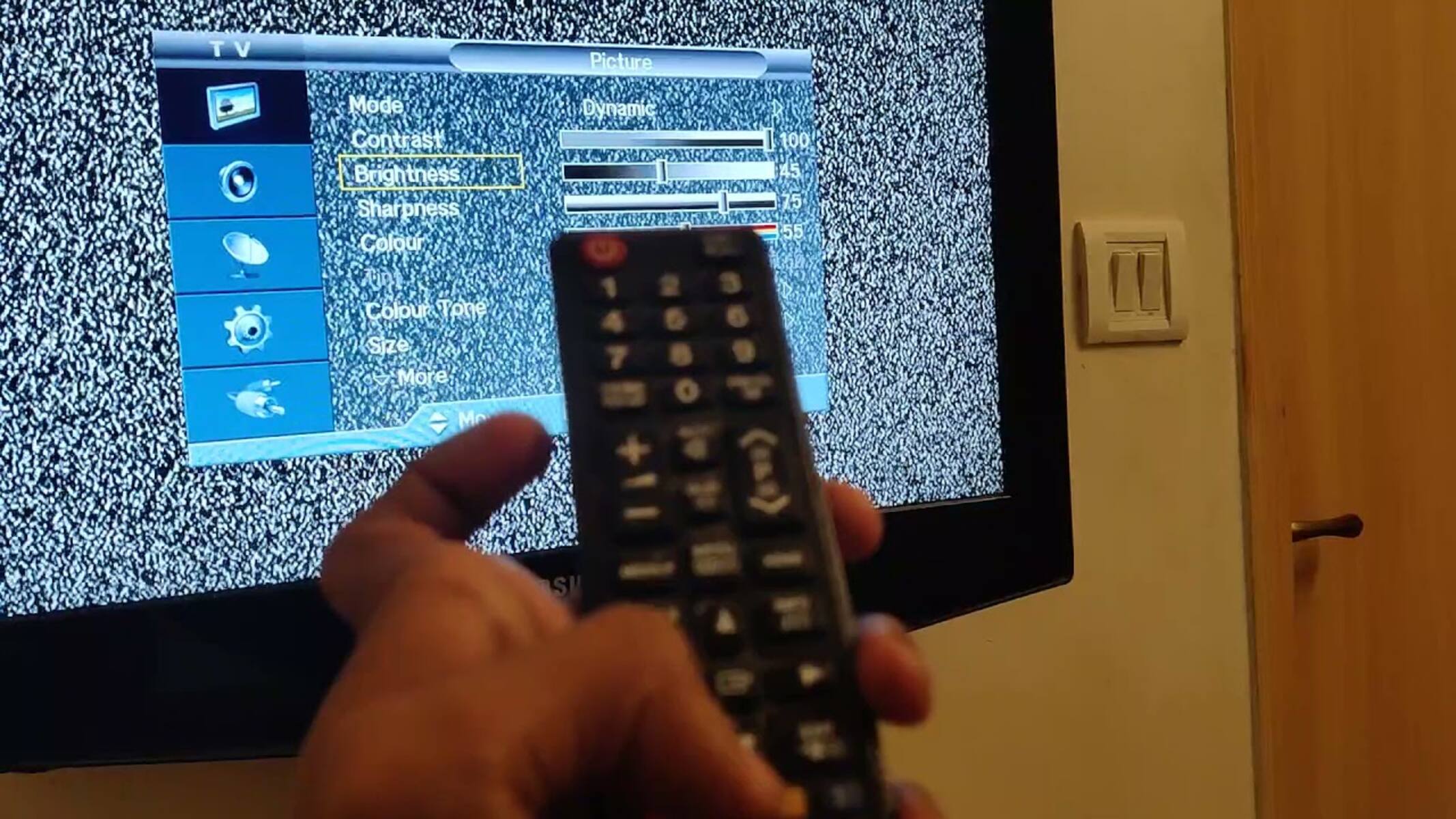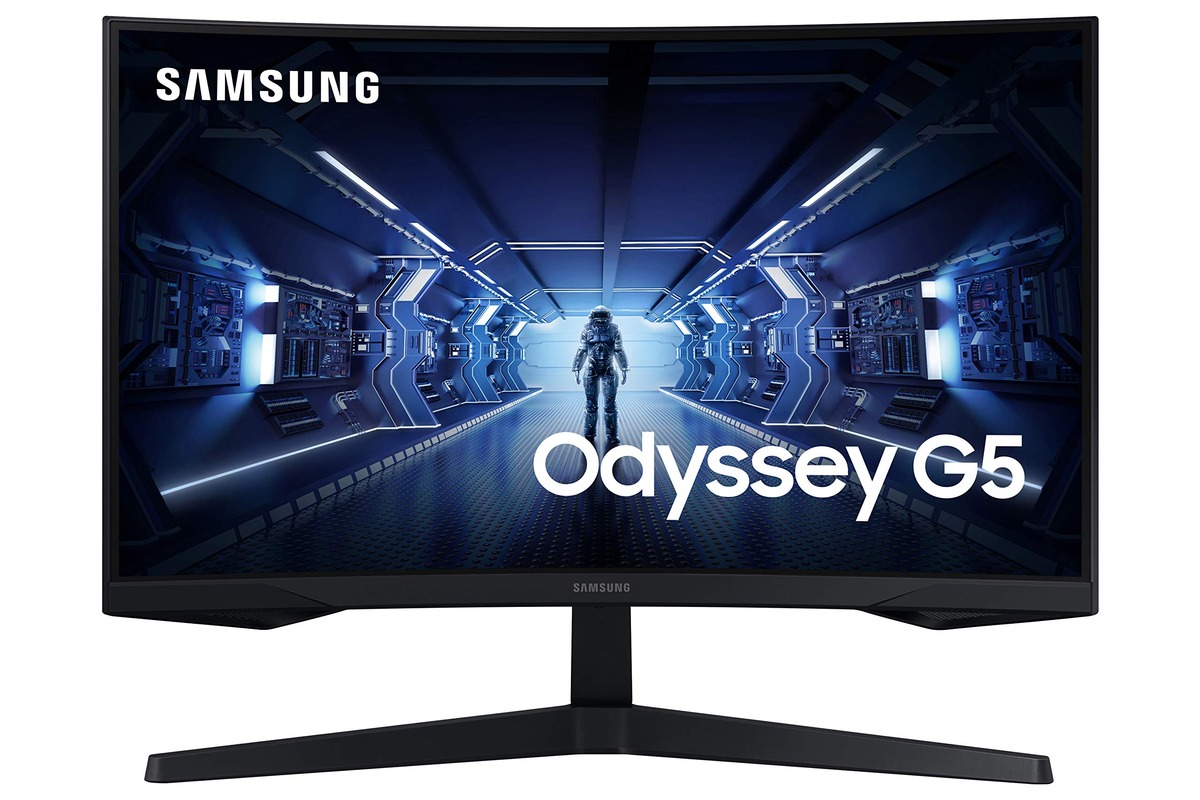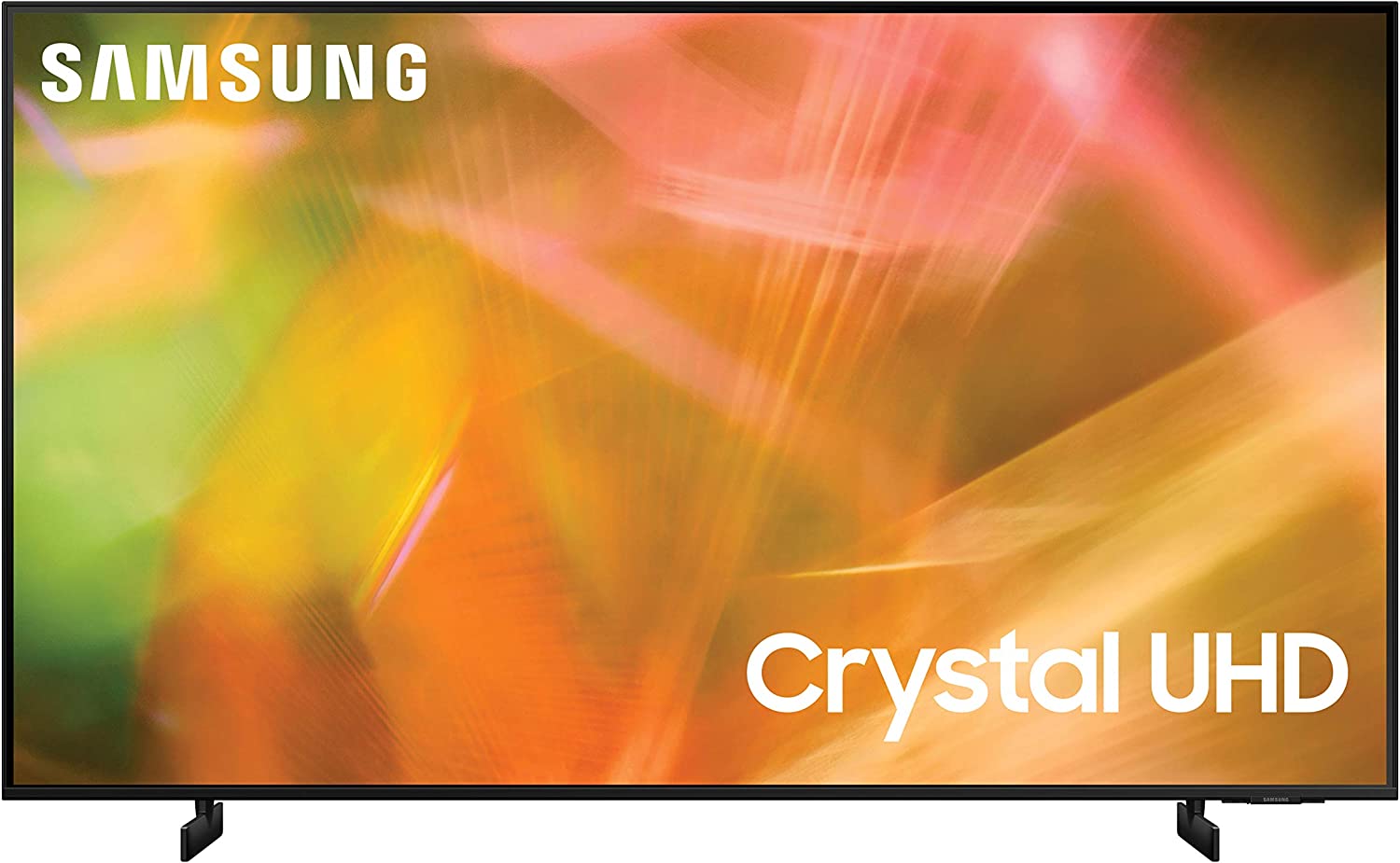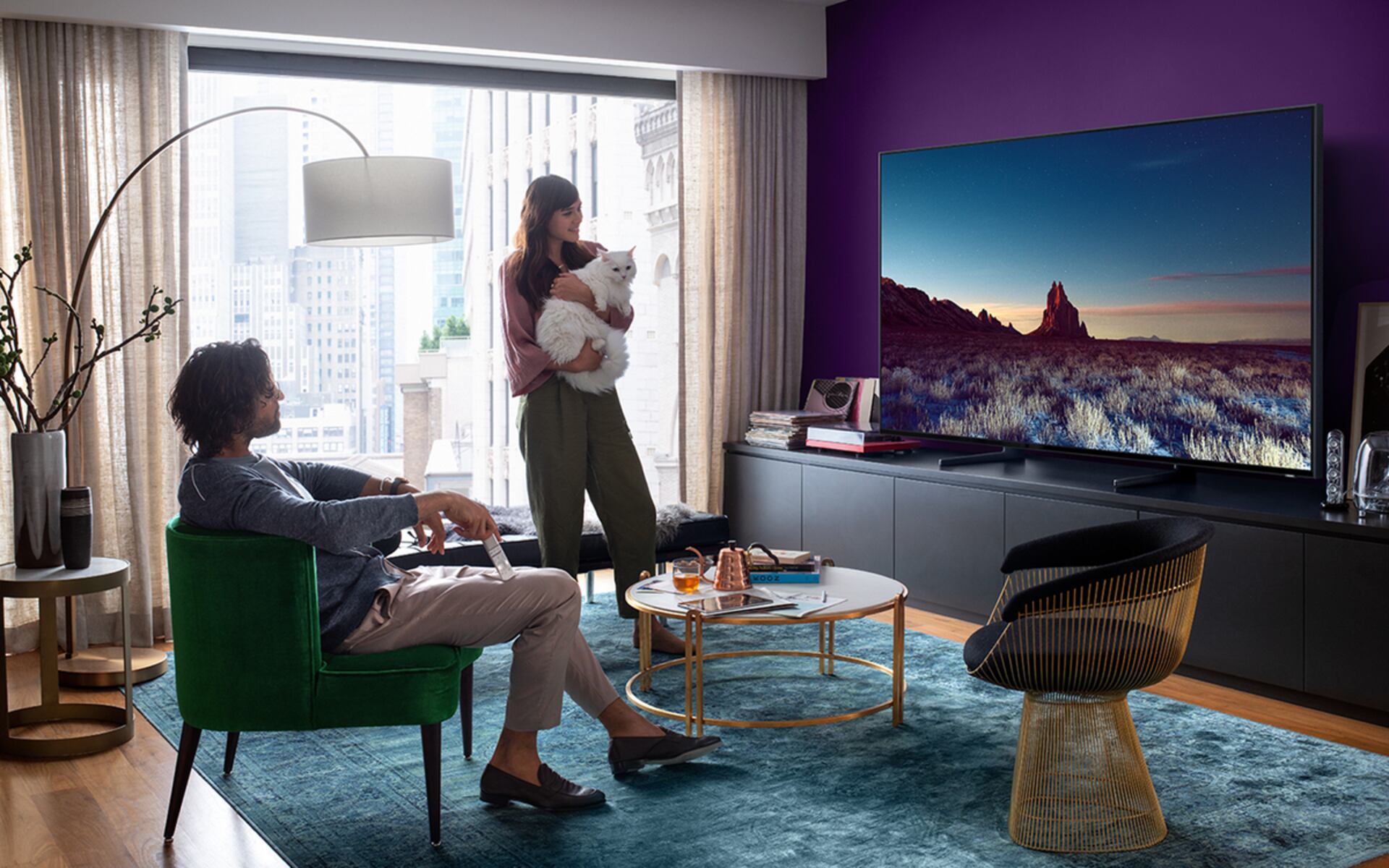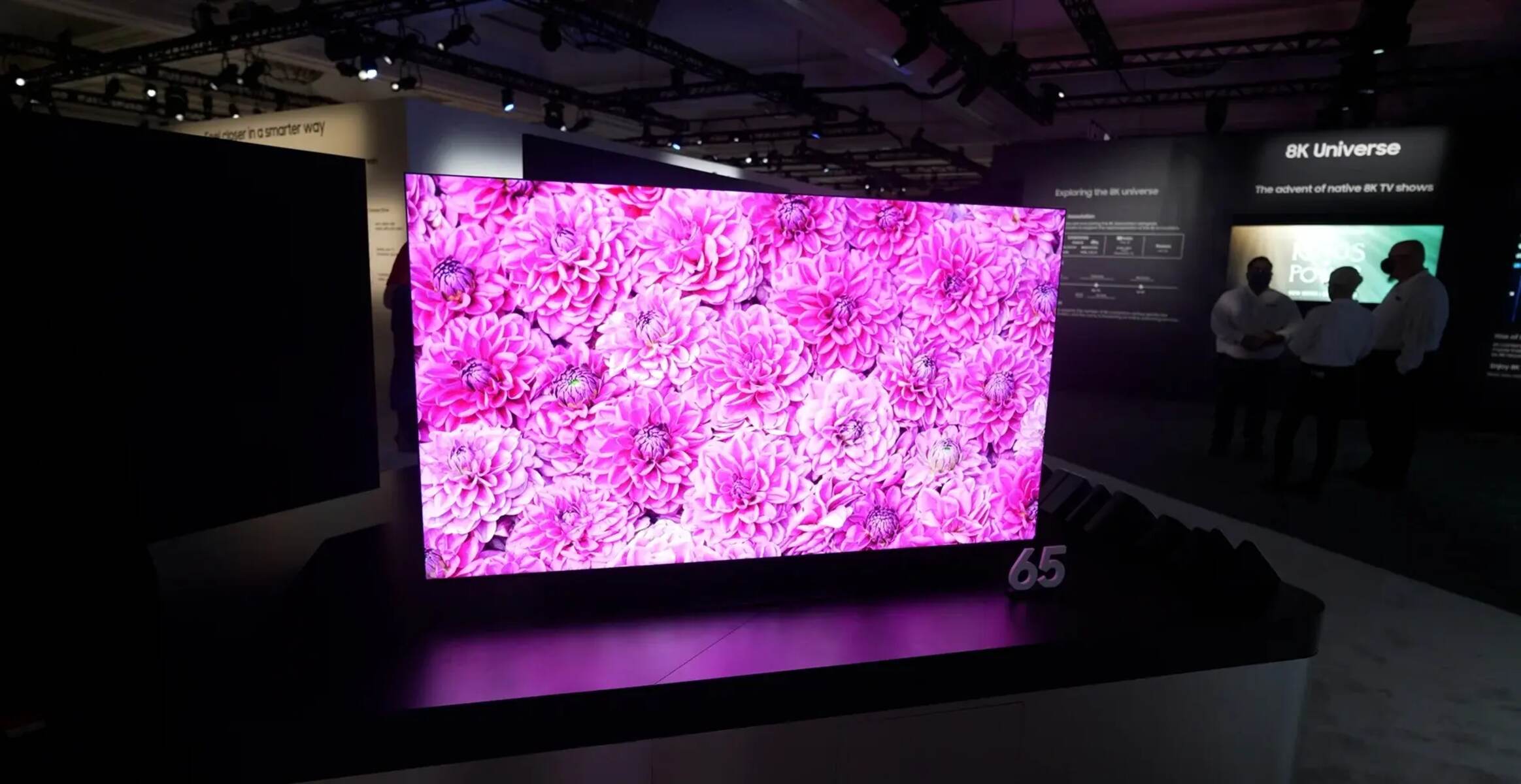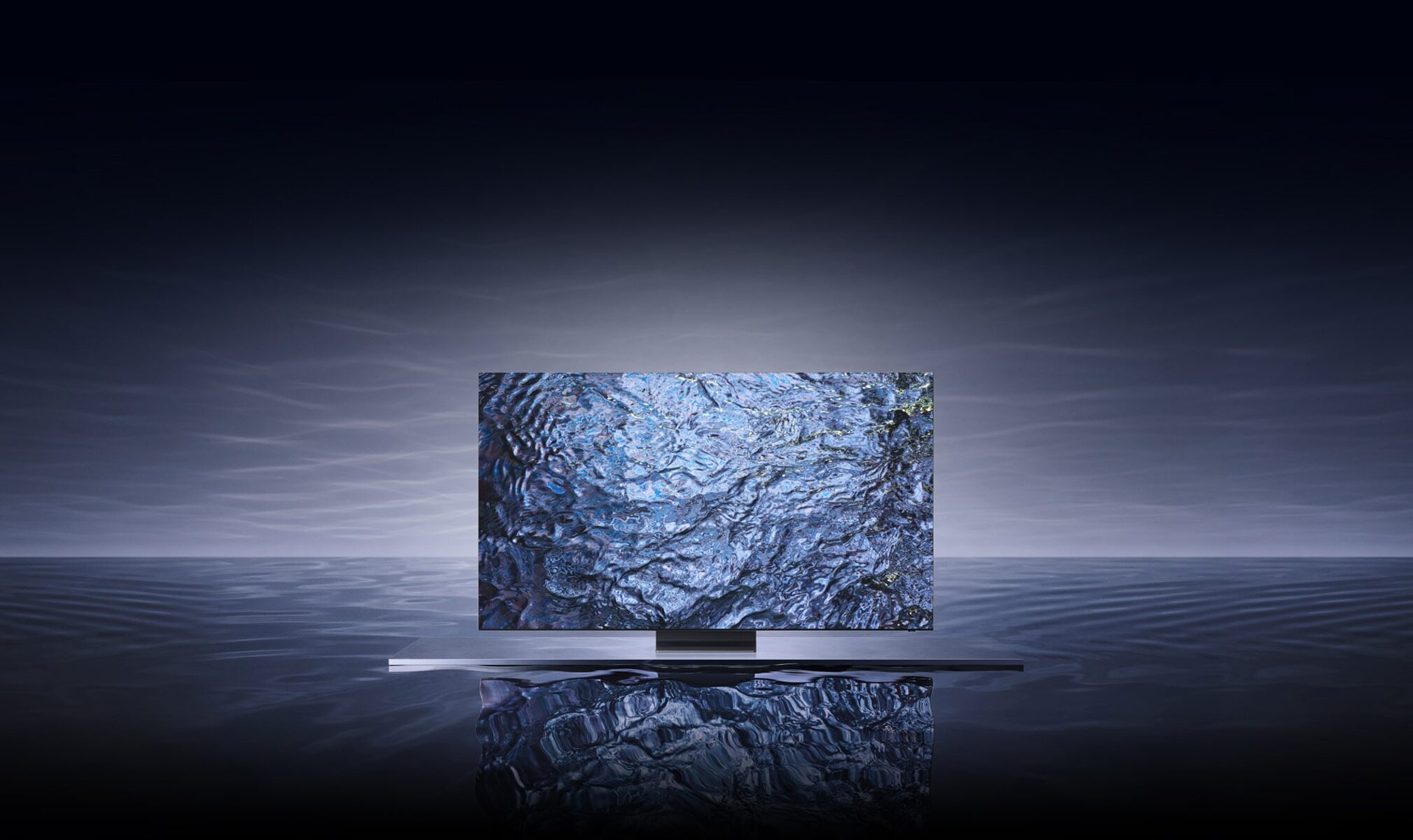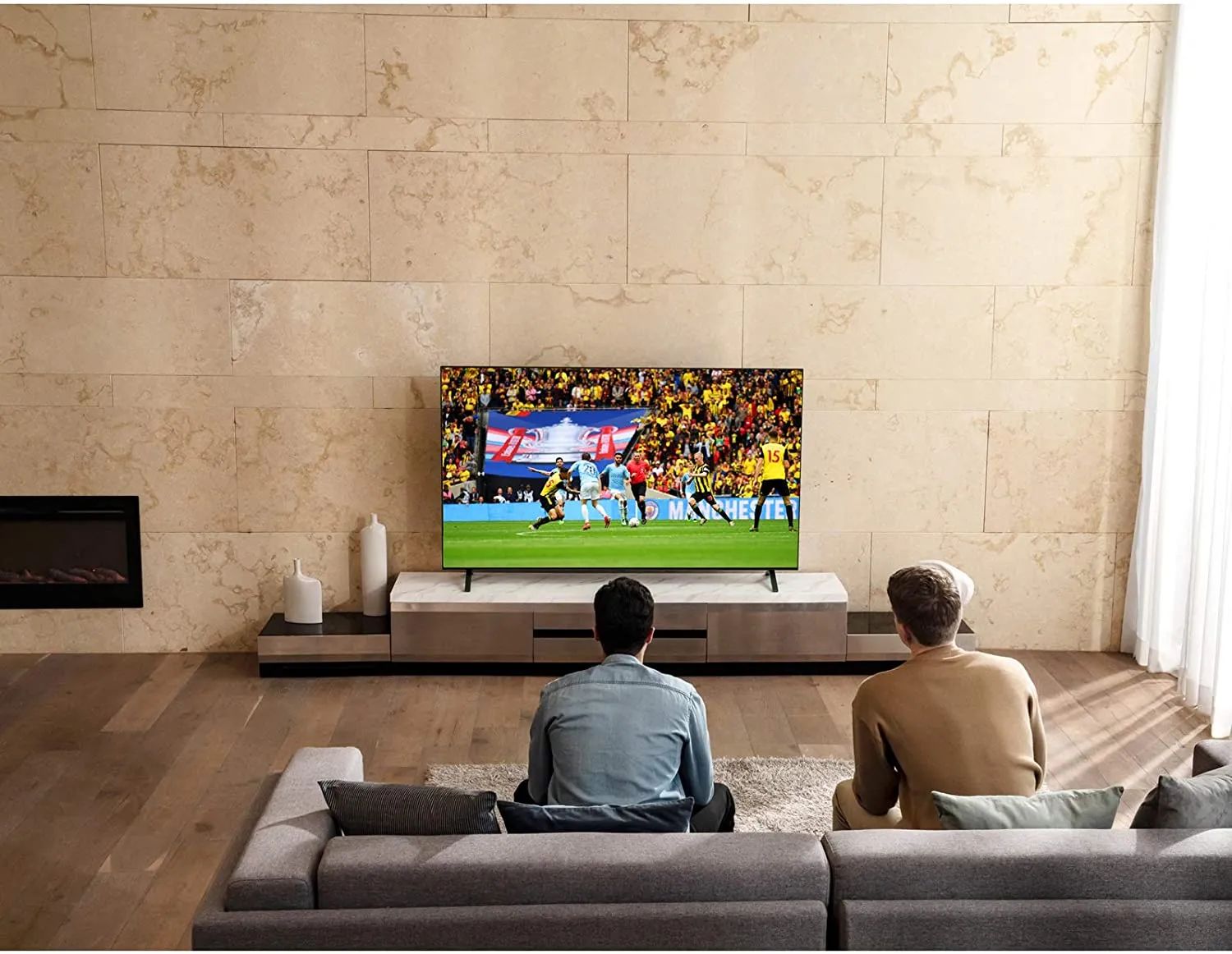Introduction
With the rise of gaming as a popular pastime and the increasing demand for immersive experiences, gaming monitors have become more advanced than ever. One such innovation is the Samsung QLED gaming monitor, a cutting-edge display that offers stunning visuals and exceptional performance. However, while a high level of brightness can enhance the visual experience, it can also lead to eye strain and fatigue during long gaming sessions.
Lowering the screen brightness on your Samsung QLED gaming monitor is crucial for a number of reasons. Firstly, it helps alleviate eye strain by reducing the intensity of the light emitted by the screen. This is especially important when gaming for extended periods, as staring at a bright screen can cause discomfort and even headaches. Secondly, adjusting the brightness level can improve the overall gaming experience by optimizing the contrast and preventing eye fatigue. By reducing the harshness of the light, you can enhance the visibility of dark areas in games, making them easier to navigate and enhancing your gameplay.
In this article, we will explore various methods to lower the screen brightness on your Samsung QLED gaming monitor. Whether you prefer to adjust the settings directly on the monitor, through your computer’s operating system, or by utilizing software and accessories, we have got you covered. By following these simple steps, you can customize the brightness according to your preferences and maximize your gaming experience without compromising your eyesight.
Why Lowering Screen Brightness is Important for Gaming
Lowering the screen brightness on your Samsung QLED gaming monitor may seem like a minor adjustment, but it can have a significant impact on your gaming experience. There are several reasons why it is crucial to reduce the brightness level when gaming:
- Eye Strain Relief: Gaming for extended periods exposes your eyes to constant bright light from the screen, which can lead to eye strain. By lowering the screen brightness, you can reduce the intensity of the light and alleviate eye fatigue. Your eyes will thank you for the reduced strain and feel less tired after long gaming sessions.
- Optimized Contrast: Brightness and contrast go hand in hand when it comes to visual quality. Lowering the screen brightness helps to strike a balance between the bright and dark areas of the game. By reducing the overall brightness, the dark areas become more pronounced, improving visibility and enhancing the overall gaming experience. This enhanced contrast can make it easier to spot enemies hiding in shadows or navigate dimly lit environments.
- Prevention of Eye Fatigue: Staring at a bright screen for prolonged periods can cause eye fatigue, which can manifest as dryness, itchiness, or even blurry vision. By lowering the brightness, you reduce the strain on your eyes and minimize the risk of developing eye fatigue. This allows you to enjoy longer gaming sessions without discomfort or the need for frequent breaks.
- Better Immersion: Lowering the screen brightness can contribute to a more immersive gaming experience. By reducing the intensity of the light, you create a more realistic and comfortable visual environment. This can improve your focus, allowing you to fully immerse yourself in the game’s world, characters, and storyline.
By acknowledging the importance of lowering the screen brightness, you prioritize your eye health, gameplay performance, and overall gaming enjoyment. Now, let’s explore the various methods you can use to adjust the screen brightness on your Samsung QLED gaming monitor.
How to Lower Screen Brightness on Samsung QLED Gaming Monitor
Adjusting the screen brightness on your Samsung QLED gaming monitor is a straightforward process. Here are four different methods that you can try:
- Method 1: Adjusting Brightness Settings on the Monitor
- Method 2: Adjusting Brightness Settings in Windows
- Method 3: Using Software or Apps to Lower Brightness
- Method 4: Using Screen Filters or Additional Accessories
The first and most basic method is to adjust the brightness settings directly on the monitor itself. Most Samsung QLED gaming monitors have dedicated controls buttons located on the bezel or the back of the monitor. Look for buttons labeled “Menu,” “Brightness,” or “Control,” and use them to navigate through the menu options to find the brightness setting. Once you locate the brightness setting, you can increase or decrease it to your desired level.
If you prefer to control the screen brightness through your computer’s operating system, you can adjust the settings in Windows. Simply right-click on the desktop and select “Display settings” or “Graphics properties.” From there, navigate to the “Brightness” or “Color” settings, where you can adjust the brightness level using a slider. Experiment with different brightness levels until you find the one that suits your preferences.
Alternatively, you can use software or apps specifically designed for adjusting screen brightness. There are a variety of options available, both free and paid, that allow you to control the brightness level of your monitor. Some popular options include f.lux, Dimmer, and Night Light. Download and install the software or app that best suits your needs, and follow the provided instructions to adjust the brightness according to your preference.
If you find that the built-in brightness options are not sufficient, you can consider using screen filters or additional accessories. Screen filters are physical overlays that attach to the screen and reduce the amount of light emitted. These filters are available in different tints and levels of darkness, allowing you to customize the brightness to your liking. Additionally, you can also explore accessories like anti-glare covers or monitor hoods, which can help reduce the intensity of the light and minimize reflections for a more comfortable viewing experience.
Experiment with these methods and find the one that works best for you. Remember, everyone’s preferences and environmental conditions are unique, so it is essential to find a brightness level that is comfortable and suits your specific requirements. Let’s explore some additional tips to optimize your gaming experience with lower screen brightness.
Method 1: Adjusting Brightness Settings on the Monitor
One of the most straightforward ways to lower the screen brightness on your Samsung QLED gaming monitor is by using the monitor’s built-in brightness settings. Follow these steps to adjust the brightness directly on the monitor:
- Locate the control buttons on the bezel or back of your Samsung QLED gaming monitor. Typically, there will be buttons labeled “Menu,” “Brightness,” or “Control.”
- Press the appropriate button to access the monitor’s menu.
- Use the control buttons to navigate through the menu options until you find the brightness setting. Depending on your monitor model, it may be labeled as “Brightness,” “Brightness/Contrast,” or something similar.
- Select the brightness setting and adjust it to your desired level. Use the up and down buttons to increase or decrease the brightness accordingly.
- Once you are satisfied with the brightness level, press the “OK” or “Exit” button to save the changes.
It is important to note that the exact steps may vary slightly depending on the model of your Samsung QLED gaming monitor. Refer to the user manual that came with your monitor for specific instructions tailored to your device.
By adjusting the brightness directly on the monitor, you have more control over the visual settings and can fine-tune the brightness level to your preference. Experiment with different brightness levels to find the one that offers optimal clarity and comfort for your gaming experience.
Now that you know how to adjust the brightness on your Samsung QLED gaming monitor, let’s explore alternative methods using your computer’s operating system in the next section.
Method 2: Adjusting Brightness Settings in Windows
If you prefer to control the screen brightness of your Samsung QLED gaming monitor through your computer’s operating system, you can easily adjust the settings in Windows. Follow these steps to lower the brightness using the built-in Windows settings:
- Right-click on the desktop and select “Display settings” from the context menu. This will open the Display settings window.
- In the Display settings window, look for the “Brightness and color” option on the left-hand side panel and click on it.
- Under the “Brightness and color” section, you will find a slider labeled “Brightness.” Drag this slider to the left to decrease the brightness level.
- As you adjust the slider, the screen brightness of your Samsung QLED gaming monitor will change in real-time, allowing you to see the effect immediately.
- Continue adjusting the brightness slider until you achieve your desired level of brightness.
Additionally, depending on your specific computer setup, you may have additional options available in the Display settings, such as a Night Light feature that reduces blue light emissions. Exploring these options can help further customize your gaming experience.
By using the Windows settings to adjust the brightness, you have the flexibility to fine-tune the screen brightness across all applications and games on your computer. This means that even if you switch to another game or software, the brightness level will remain consistent.
Now that you know how to adjust the brightness through Windows, let’s move on to exploring other methods, such as using software or apps dedicated to screen brightness control.
Method 3: Using Software or Apps to Lower Brightness
If you’re looking for more advanced control over the screen brightness of your Samsung QLED gaming monitor, you can turn to software or apps specifically designed for this purpose. These tools offer additional features and customization options, allowing you to fine-tune the brightness according to your preferences. Here’s how you can lower the brightness using software or apps:
- Research and choose a software or app that supports screen brightness control. Popular options include f.lux, Dimmer, and Night Light.
- Visit the official website or trusted software/app stores to download the chosen software or app.
- Install the software or app on your computer following the provided instructions.
- Launch the software or app and locate the brightness control options.
- Adjust the brightness slider or settings within the software or app to lower the screen brightness to your desired level.
- Some software or apps may offer additional features like scheduling the brightness changes according to the time of day, syncing with your gaming profile, or customizing the brightness for specific applications.
Experiment with the different settings and features available in the software or app to find the optimal level of brightness for your gaming sessions. Keep in mind that not all software or apps may be compatible with your system or monitor, so it’s important to do some research beforehand and read user reviews to ensure compatibility and reliability.
Using software or apps to control the brightness provides you with more flexibility and customization options compared to adjusting the settings on the monitor or in Windows. It allows you to have precise control over the brightness level and can enhance your gaming experience, especially if you prefer to switch between different brightness levels for different games or situations.
Now that you have explored using software or apps to lower the brightness, let’s proceed to the next method, which involves using screen filters or additional accessories.
Method 4: Using Screen Filters or Additional Accessories
If you find that the built-in brightness adjustments on your Samsung QLED gaming monitor are not sufficient, or if you’re looking for alternative methods to lower the screen brightness, you can consider using screen filters or additional accessories. These can provide further customization and enhance your gaming experience. Here’s how you can use screen filters or accessories:
- Screen Filters: Screen filters are physical overlays that attach to the surface of your monitor. They are available in different tints and darkness levels, allowing you to reduce the amount of light emitted from the screen. Simply attach the screen filter onto your Samsung QLED gaming monitor, following the manufacturer’s instructions, and adjust the filter’s darkness level to your desired brightness. Screen filters not only reduce brightness but also help minimize glare and reflections, making for a more comfortable viewing experience.
- Anti-Glare Covers: Another option to lower brightness and minimize glare is by using anti-glare covers. These attachable covers are designed to reduce the intensity of light reflected off the screen, improving visibility and reducing eye strain. Anti-glare covers come in various sizes to fit different monitor models, so ensure you choose the one compatible with your Samsung QLED gaming monitor.
- Monitor Hoods: For an even more immersive and focused gaming experience, you can consider using a monitor hood. Monitor hoods are attachable covers that surround the top and sides of the monitor, effectively blocking out ambient light sources and reducing glare. By creating a controlled lighting environment, monitor hoods allow you to better perceive the colors and contrast on the screen, enhancing the overall gaming experience.
When using screen filters, anti-glare covers, or monitor hoods, make sure to follow the manufacturer’s instructions for proper installation and adjustments. It’s important to select accessories that are specifically designed for your monitor model to ensure a proper fit and optimal performance. Additionally, keep in mind that these accessories may alter the aesthetics of your monitor, so consider your personal preferences and gaming setup before making a decision.
By utilizing screen filters or additional accessories, you can further customize the brightness of your Samsung QLED gaming monitor and create an optimal gaming environment. Experiment with different accessories to find the combination that best suits your preferences and enhances your gaming experience.
Now that you have explored various methods to lower the screen brightness on your Samsung QLED gaming monitor, we will provide some additional tips to optimize your gaming experience with lower screen brightness.
Tips for Optimizing Gaming Experience with Lower Screen Brightness
Lowering the screen brightness of your Samsung QLED gaming monitor can greatly improve your gaming experience, but there are some additional tips you can follow to optimize this adjustment. Here are some tips to consider:
- Adjust Ambient Lighting: Lowering the screen brightness works best when you also adjust the ambient lighting in your gaming space. Reduce the overall brightness of the room by using dimmer switches or closing curtains/blinds, ensuring that the contrast between the screen and the surroundings is comfortable for your eyes.
- Calibrate Colors and Contrast: Lowering the brightness may affect the colors and contrast on your screen. Consider calibrating the colors and contrast settings on your Samsung QLED gaming monitor to ensure a well-balanced visual experience. Refer to the monitor’s manual or use color calibration tools to achieve accurate and pleasing colors.
- Take Breaks: Even with lower screen brightness, it is important to take regular breaks during long gaming sessions. Rest your eyes by looking away from the screen, focusing on a distant object, or engaging in other non-screen activities. Frequent breaks allow your eyes to recover and reduce the risk of eye strain or fatigue.
- Adjust Game Graphics Settings: Some games have in-game brightness or gamma settings. Take advantage of these settings to further optimize the visibility of dark areas in the game. Experiment with different brightness levels within the game to find the setting that enhances both visibility and immersion.
- Use a Blue Light Filter: Apart from lowering the screen brightness, consider using a blue light filter to reduce the blue light emitted by your Samsung QLED gaming monitor. Blue light can disrupt your sleep patterns and cause eye strain. Many monitors and operating systems have built-in options for blue light filtering, or you can use third-party software such as f.lux or Night Shift to adjust the color temperature to a more eye-friendly setting.
- Adjust Brightness for Different Games: Each game has its own unique lighting and visual design. Experiment with different brightness levels for different games to find the setting that suits each game best. Some games may benefit from a higher brightness level for better visibility, while others may require a lower brightness level for a more immersive experience.
Remember, everyone’s visual preferences vary, so it’s important to find the brightness setting that personally suits you best. Take the time to experiment and adjust until you find the perfect balance between brightness, contrast, and immersion for an optimal gaming experience.
By implementing these tips and combining them with the lowered screen brightness on your Samsung QLED gaming monitor, you can enhance both your gaming performance and overall eye comfort. Enjoy your gaming sessions with reduced eye strain and improved visual immersion!
Conclusion
Lowering the screen brightness on your Samsung QLED gaming monitor is a crucial step in optimizing your gaming experience. By reducing the brightness level, you can alleviate eye strain, improve contrast, prevent eye fatigue, and create a more immersive gaming environment.
In this article, we explored various methods to lower the screen brightness on your Samsung QLED gaming monitor. You can adjust the brightness directly on the monitor using the built-in settings, or through the Windows operating system. Additionally, you can utilize software or apps specifically designed for screen brightness control, or consider using screen filters or additional accessories like anti-glare covers or monitor hoods to further customize the brightness level.
For the best results, remember to adjust the ambient lighting in your gaming space, calibrate colors and contrast, and take regular breaks during long gaming sessions. Experiment with different brightness levels for different games, and consider utilizing blue light filters to reduce eye strain caused by prolonged exposure to screen light.
By implementing these tips, you can optimize your gaming experience with lower screen brightness on your Samsung QLED gaming monitor. Remember, finding the ideal brightness level is a personal preference, so take the time to adjust and customize the settings until you achieve the perfect balance between brightness and visual comfort.
Now that you have a better understanding of how to lower the screen brightness on your Samsung QLED gaming monitor, it’s time to apply these techniques and enjoy your gaming sessions with reduced eye strain, enhanced contrast, and improved visual immersion. Happy gaming!







